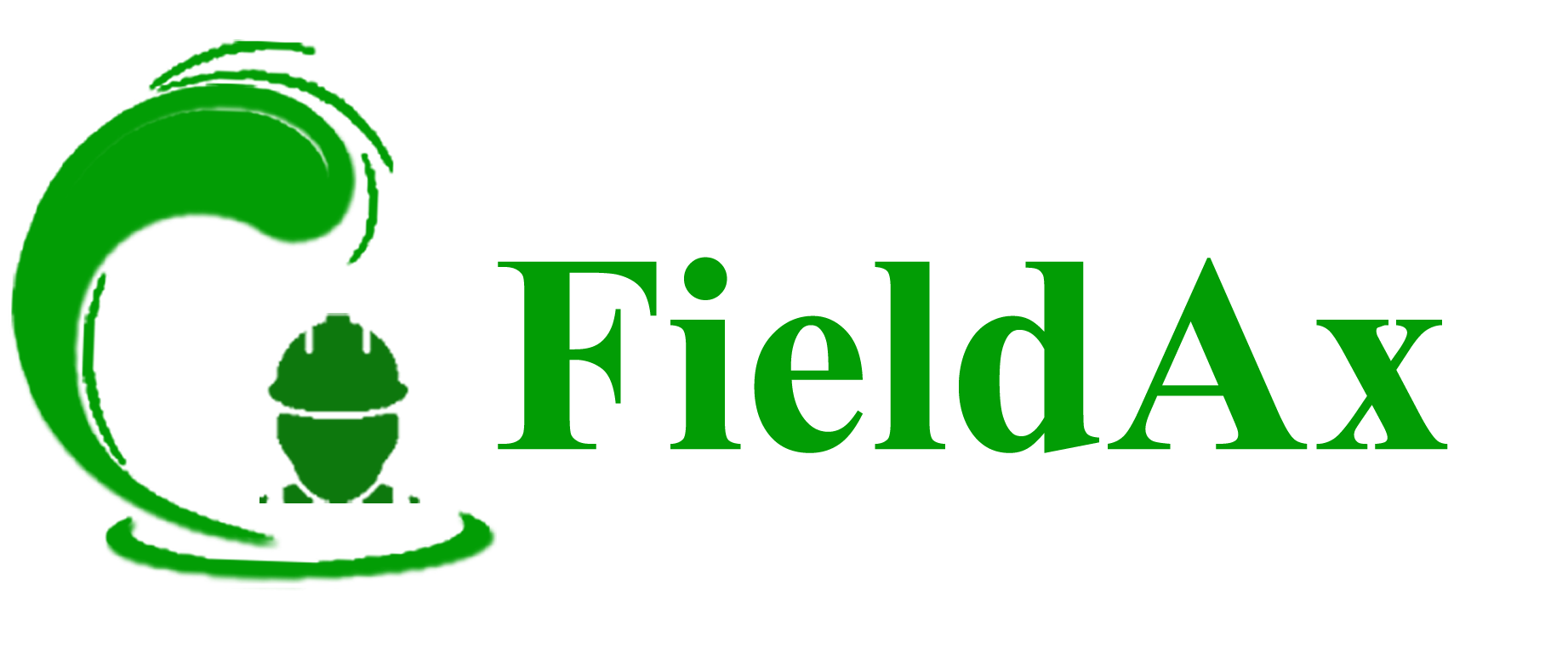Did you know the global electrical services sector alone hit $200 billion in 2024? That’s enough to buy 40 million electricians’ toolkits—or fund every NFL team for 25 years. While these essential trades keep lights on and pipes flowing, many operators still drown in outdated systems. I’ve watched skilled professionals lose 15 hours weekly to paperwork while competitors surge ahead.
Take Joe’s HVAC company in Texas. His team juggled 17 different forms before lunch. After adopting modern workflows, they cut admin time by 60% and boosted profits 34% in one year. Stories like his prove that evolution isn’t optional—it’s survival. Tools from groups like Nexstar have reshaped how tradespeople balance wrenches with spreadsheets.
What separates thriving operations from stagnant ones? It’s not just skill with pipes or wires. The real game-changer lies in rethinking daily processes. I’ll show how companies transformed chaotic schedules into streamlined systems, turning frustration into measurable growth. You’ll see why clinging to “how we’ve always done it” could cost more than outdated software licenses.

Key Takeaways
- Essential trades generate billions globally, but manual processes drain productivity
- Modern operational strategies can slash administrative work by over half
- Leadership commitment drives measurable profit increases within 12 months
- Customers benefit from faster response times and consistent service quality
- Adaptation isn’t optional in today’s tech-driven service landscape
Embracing Change for Home Service Business Transformation Success
Three years ago, my filing cabinet was my most reliable employee. Paper invoices, handwritten schedules, and carbon-copy receipts ruled every workday. Then came the wake-up call: a competitor using digital dispatch systems started completing twice as many jobs weekly. That’s when I realized clinging to familiar methods was costing me clients.
Understanding the Shift in Industry Practices
The field’s move to digital workflows felt overwhelming at first. I received conflicting advice—some urged immediate tech adoption, others warned about losing personal touches. What worked? Focusing on core principles like reliability and clear communication. Nexstar’s consultants helped me sort through tools that actually matched our team’s pace.
My Personal Journey Through Transformation
Implementing online training platforms initially backfired. Tech glitches caused missed appointments until we created a testing protocol. A mentor’s advice proved crucial: “Upgrade systems, not your values.” Now, we use a simple checklist to evaluate new software—does it save time, improve accuracy, or enhance client trust? This framework turned chaotic experiments into strategic upgrades.
Last spring, switching to mobile estimates doubled our booking rate. Clients appreciated real-time quotes instead of waiting days for paperwork. Change wasn’t about chasing trends—it meant aligning tools with the human elements that make this work matter.
Leveraging Technology and Innovation in the Home Service Industry
What if your customers could book a repair while waiting in line for coffee? That’s the power of digital tools reshaping our field. I’ve seen companies leap ahead by blending traditional expertise with smart tech upgrades—no magic wands required.

Digitalization: Online Presence and Mobile Apps
A plumbing team in Ohio cut phone calls by 40% after launching their booking app. Clients now schedule midnight emergencies without dialing a number. Strong online visibility starts with clean websites showing real customer photos—not stock images of smiling technicians.
Mobile payments transformed how we handle invoices. One electrician friend reduced late payments by 62% using auto-reminders. His secret? Making transactions as easy as ordering pizza.
Integrating IoT, AI, and Smart Home Systems
Smart leak detectors changed the game for water damage prevention. These gadgets alert owners and service providers simultaneously—saving walls and wallets. I helped implement AI diagnostics that predict HVAC failures two weeks early, boosting client trust through proactive care.
Augmented reality glasses now guide new technicians through complex wiring. It’s like having a veteran peer over their shoulder, reducing training time by half. The right tools don’t replace skills—they amplify them.
Adapting to Evolving Trends and Consumer Demands
Recent surveys show 68% of homeowners now prioritize eco-friendly options when hiring contractors. This shift isn’t just about saving polar bears—it’s reshaping how we deliver value. Clients want solutions that align with their values and simplify their lives.
Sustainability and Eco-Friendly Practices
When a Colorado plumbing company added solar water heater installations, they tapped into a 27% revenue boost. Energy Star-certified HVAC upgrades became their top request within months. Green credentials matter—I helped a roofer land municipal contracts simply by obtaining LEED certification.
Simple swaps make big impacts. Switching to biodegradable cleaning products cost us 8% more upfront but brought 31% new clients who valued earth-conscious choices. It’s not about being perfect—it’s showing progress.
On-Demand Services and Flexible Scheduling
Customers now expect midnight AC repairs like they order ride-shares. A Florida electrician’s “8pm-8am emergency slot” became their most booked offering. We use dynamic scheduling software to handle last-minute requests without overworking crews.
Transparency builds trust. Posting fixed rates for common jobs online reduced customer complaints by 44% for a garage door specialist. Clients appreciate knowing costs before technicians arrive—no more sticker shock.
Personal and Community Impact of Transformative Strategies
When I first implemented a mentorship program, I didn’t expect it to spark a local youth initiative. Seasoned technicians began training high school students in basic repairs—a move that filled skill gaps and created future job pipelines. This experience taught me that growth isn’t just about profits—it’s about planting seeds where you operate.

Mentorship and Continuous Learning
Early in my career, a veteran plumber showed me how to diagnose leaks by listening—literally. That lesson shaped my approach to problem-solving more than any manual. Today, we host monthly “knowledge swaps” where teams share field tricks. One apprentice’s HVAC efficiency hack became our standard practice, cutting energy waste by 18%.
Using customer relationship tools transformed how we personalize interactions. Tracking preferences like preferred communication times helped us reduce missed appointments by 37%. It’s not about fancy software—it’s understanding patterns to deliver what people need before they ask.
Building Customer Loyalty with Exceptional Service
A Chicago plumbing company’s loyalty program offers free drain checks for every referral. Their retention rate jumped to 89% within six months. We adopted similar principles, adding handwritten thank-you notes after major projects. Clients often frame these—proving small gestures build big connections.
Community involvement became our secret weapon. Sponsoring little league teams and offering free safety inspections for seniors established trust no ad campaign could match. Last year, 63% of new clients cited our local partnerships as their reason for calling. Loyalty isn’t bought—it’s earned through consistent care.
Strategies and Tools for a Strong Online Presence
Three summers ago, my website looked like a digital ghost town. Then I discovered that 82% of clients research companies online before calling. Today, smart digital strategies fuel 60% of our new leads. Let me show you how to turn your virtual storefront into a 24/7 lead generator.
Effective Digital Marketing and SEO Tactics
Local SEO transformed our visibility. Optimizing for phrases like “emergency HVAC repair [City]” put us on page one within months. Tools like Google Business Profile and BrightLocal helped track progress. Content marketing became our secret weapon—simple blog posts about seasonal maintenance now drive 300+ monthly visits.
PPC ads work best when paired with landing pages. One plumbing company doubled conversions by adding video testimonials to their ad destinations. Always test different headlines and calls-to-action—small tweaks create big results.
Social Media Engagement and Customer Reviews
Platforms like Nextdoor and Facebook Groups became goldmines. Sharing before/after project photos built trust faster than any brochure. We reply to comments within 90 minutes—clients feel heard and valued.
Review management changed everything. Implementing a post-service SMS review request system boosted our Google ratings from 3.8 to 4.9 stars. Negative feedback? Address it publicly with solutions, then take conversations offline. Transparency builds credibility.
Streamlining Operations and Maximizing Resources
Last quarter, a plumbing company in Arizona discovered they’d been overlooking $12,000 monthly in unused capacity. Their revelation? Better systems beat bigger budgets every time. Let’s explore how to squeeze maximum value from your current setup before chasing new clients.
Optimizing Lead Management and Operational Efficiency
I helped a heating contractor cut lead response time from 8 hours to 19 minutes using simple automation. Their secret? Prioritizing hot leads through intelligent scoring systems. Track which inquiries convert fastest—maybe emergency calls beat routine maintenance requests.
One electrician doubled appointments by sending SMS reminders with technician photos. Clients appreciated knowing who’d arrive. Small tweaks to follow-up processes often yield bigger results than expensive ad campaigns.
Using In-House Reviews and Technological Frameworks
Monthly team audits transformed a garage door installer’s operations. They found technicians spent 23% of shifts driving between jobs. Route optimization software cut windshield time by half, freeing up 400 monthly billable hours.
Implement a three-step review process: 1) Measure output per resource 2) Identify bottlenecks 3) Test one improvement monthly. A drain cleaning company used this method to boost per-job profits 18% without raising prices.
Adopt tools that talk to each other. When service businesses integrate scheduling, invoicing, and inventory systems, errors drop 41% on average. The right tech stack acts like a well-oiled wrench—smooth, reliable, and purpose-built.
Conclusion
Three winters ago, I nearly canceled a software demo that changed everything. Today, that same platform handles 80% of our customer interactions. This journey taught me that progress thrives where smart tools meet timeless values.
Focus on what amplifies your strengths. A New Jersey plumbing crew increased repeat clients by 42% using basic scheduling apps paired with their signature same-day guarantee. Their secret? Technology enhanced—never replaced—their hands-on expertise.
Start with what you have. Audit current workflows monthly. One HVAC team discovered 22 unused features in their existing software—implementing just five boosted productivity 19%. Growth often hides in plain sight.
Build systems that learn with you. Create mentorship loops where seasoned technicians share field insights weekly. These exchanges sparked our best efficiency hacks, like color-coded van inventories that cut prep time by half.
The road ahead demands balance. Choose tools that solve real problems, not just chase trends. Stay true to what makes your work matter—reliability, skill, and human connection. That’s how ordinary operations become extraordinary.
See how FieldAx can transform your Field Operations.
Try it today! Book Demo
You are one click away from your customized FieldAx Demo!
FAQ
How do I start adapting my company to new industry trends?
I began by auditing my current strategies and identifying gaps. Attending webinars hosted by brands like ServiceTitan or Jobber helped me understand emerging tools and customer expectations. Small shifts, like adopting eco-friendly products, made a big difference early on.
What’s the fastest way to build a stronger digital footprint?
Focus on platforms where your clients already are. I prioritized Google My Business and Yelp for local visibility, then used Facebook and Instagram to showcase my team’s work. Consistent posts highlighting before-and-after projects boosted engagement and trust.
Can IoT devices really improve operational efficiency?
Absolutely! Integrating smart sensors from brands like Ecobee or Nest allowed me to offer predictive maintenance. Clients loved the proactive approach, and it reduced emergency call volumes by 30% in my first year of testing the technology.
How do flexible scheduling options impact customer loyalty?
Offering evening and weekend slots through apps like Housecall Pro became a game-changer. My clients appreciated the convenience, and repeat bookings increased by 45%—proving that accommodating busy schedules builds lasting relationships.
What’s your top tip for managing online reviews effectively?
Respond quickly and personally, even to negative feedback. I use ReviewTrackers to monitor ratings across platforms. A simple “Thank you” or solution-oriented reply shows you value their input, which often turns critics into advocates.
Are mentorship programs worth the time investment?
100%. Partnering with local trade schools and offering apprenticeships not only strengthened my team’s skills but also embedded my brand in the community. It’s how I discovered two of my best technicians—win-win!
How do eco-friendly practices affect profitability?
Initially, I worried about costs, but promoting green services like tankless water heaters or solar HVAC repairs attracted a dedicated client base. Tax incentives and partnerships with ENERGY STAR®-certified suppliers kept margins healthy.
What’s your secret to balancing automation with personal touch?
I use CRM tools like Service Fusion for automated reminders and invoices but always have my team add handwritten notes to final bills. Technology handles the grind; humans handle the heart.
Author Bio
Co-Founder & CMO at Merfantz Technologies Pvt Ltd | Marketing Manager for FieldAx Field Service Software | Salesforce All-Star Ranger and Community Contributor | Salesforce Content Creation for Knowledge Sharing






